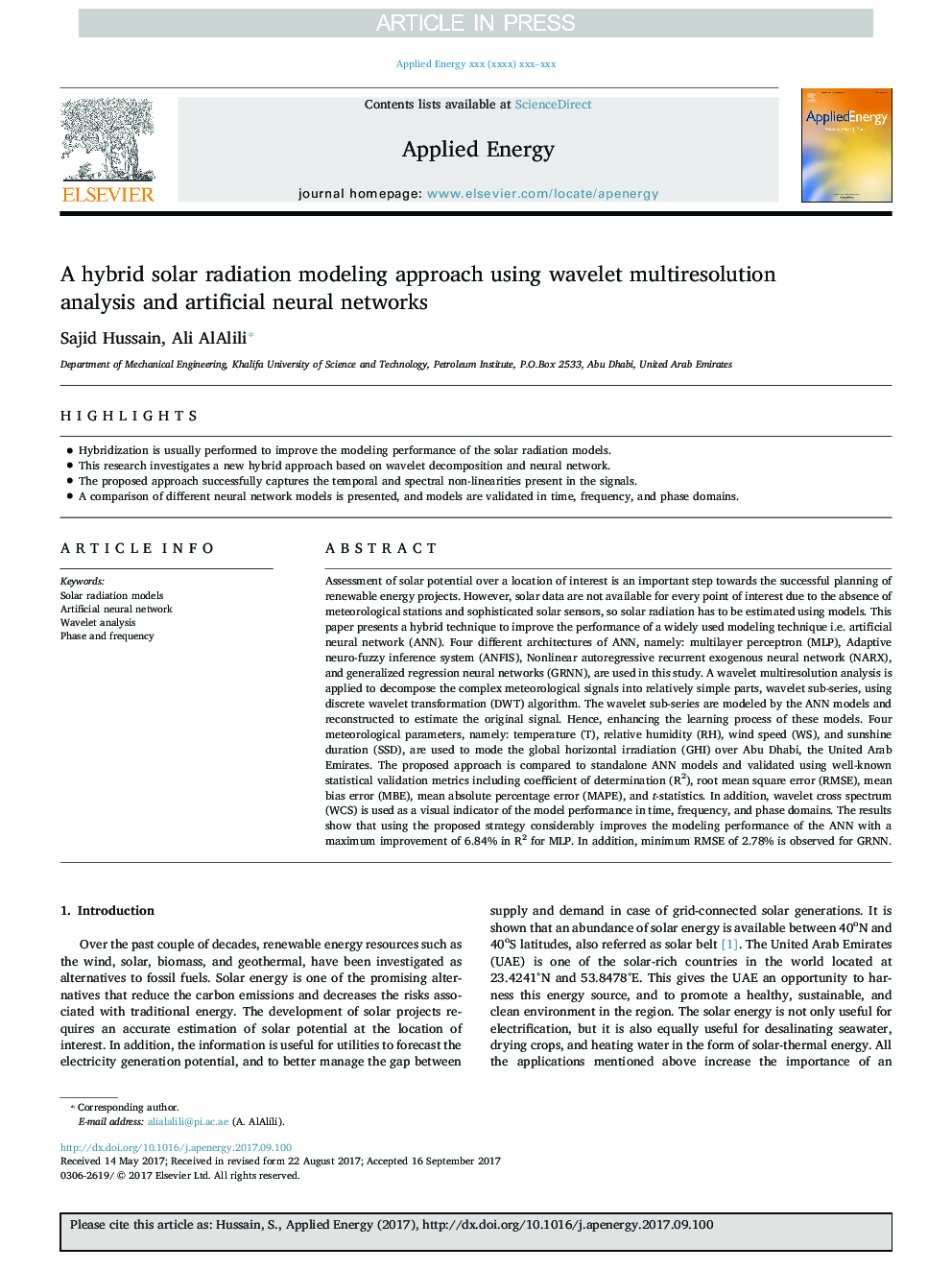| کد مقاله | کد نشریه | سال انتشار | مقاله انگلیسی | نسخه تمام متن |
|---|---|---|---|---|
| 6681708 | 1428082 | 2017 | 11 صفحه PDF | دانلود رایگان |
عنوان انگلیسی مقاله ISI
A hybrid solar radiation modeling approach using wavelet multiresolution analysis and artificial neural networks
ترجمه فارسی عنوان
یک روش مدل سازی هیبریدی خورشیدی با استفاده از تحلیل چندتایی موجک و شبکه های عصبی مصنوعی
دانلود مقاله + سفارش ترجمه
دانلود مقاله ISI انگلیسی
رایگان برای ایرانیان
کلمات کلیدی
مدل های تابش خورشیدی، شبکه های عصبی مصنوعی، تحلیل ویولت، فاز و فرکانس،
موضوعات مرتبط
مهندسی و علوم پایه
مهندسی انرژی
مهندسی انرژی و فناوری های برق
چکیده انگلیسی
Assessment of solar potential over a location of interest is an important step towards the successful planning of renewable energy projects. However, solar data are not available for every point of interest due to the absence of meteorological stations and sophisticated solar sensors, so solar radiation has to be estimated using models. This paper presents a hybrid technique to improve the performance of a widely used modeling technique i.e. artificial neural network (ANN). Four different architectures of ANN, namely: multilayer perceptron (MLP), Adaptive neuro-fuzzy inference system (ANFIS), Nonlinear autoregressive recurrent exogenous neural network (NARX), and generalized regression neural networks (GRNN), are used in this study. A wavelet multiresolution analysis is applied to decompose the complex meteorological signals into relatively simple parts, wavelet sub-series, using discrete wavelet transformation (DWT) algorithm. The wavelet sub-series are modeled by the ANN models and reconstructed to estimate the original signal. Hence, enhancing the learning process of these models. Four meteorological parameters, namely: temperature (T), relative humidity (RH), wind speed (WS), and sunshine duration (SSD), are used to mode the global horizontal irradiation (GHI) over Abu Dhabi, the United Arab Emirates. The proposed approach is compared to standalone ANN models and validated using well-known statistical validation metrics including coefficient of determination (R2), root mean square error (RMSE), mean bias error (MBE), mean absolute percentage error (MAPE), and t-statistics. In addition, wavelet cross spectrum (WCS) is used as a visual indicator of the model performance in time, frequency, and phase domains. The results show that using the proposed strategy considerably improves the modeling performance of the ANN with a maximum improvement of 6.84% in R2 for MLP. In addition, minimum RMSE of 2.78% is observed for GRNN.
ناشر
Database: Elsevier - ScienceDirect (ساینس دایرکت)
Journal: Applied Energy - Volume 208, 15 December 2017, Pages 540-550
Journal: Applied Energy - Volume 208, 15 December 2017, Pages 540-550
نویسندگان
Sajid Hussain, Ali AlAlili,
